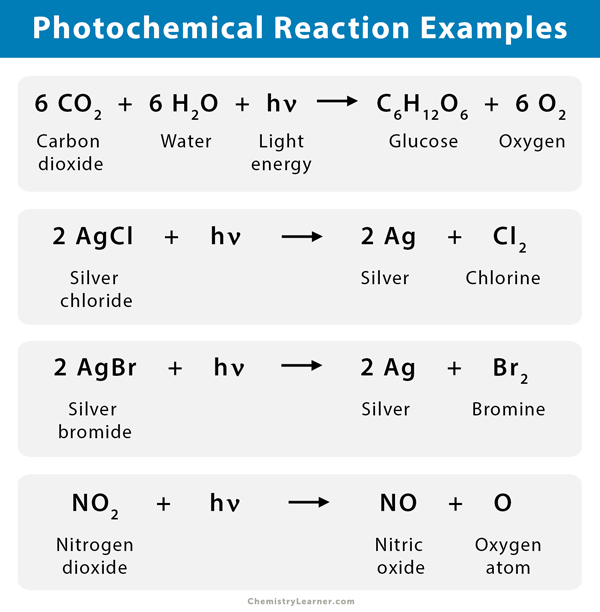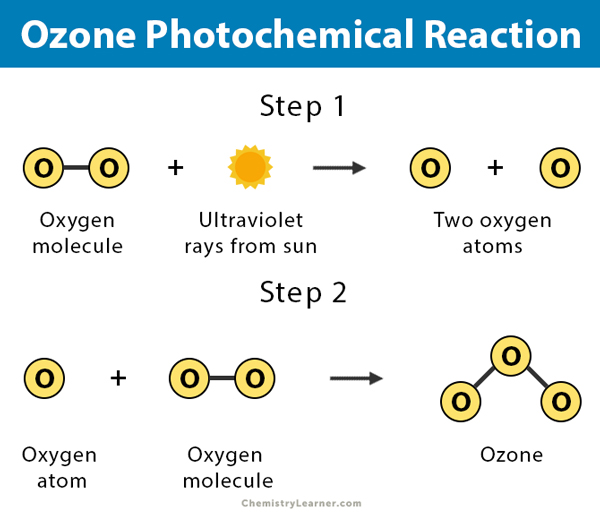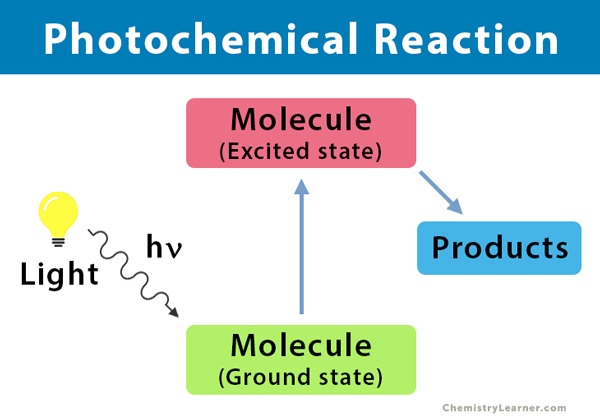Explain Different Types of Photochemical Reactions
In this reaction sunlight is the source of energy in the form of photons. Consequently the requirement of a standard assay is very important in order to compare the results of different laboratories and validation of the.

The Key Difference Between Photochemical And Thermal Reaction Is That The Photochemical Reaction Initiates When Photosynthesis Thermal Electron Transport Chain
The energy made available by sunlight helps in breaking the bonds and this leads to chemical reaction between hydrogen and chlorine.

. Refractive index is the measure of the velocity of light in a specific medium it is dimensionless. 1 categorized into ozone-based UV-based electrochemical eAOP catalytic cAOP and. 16 This summarises the conclusions of a range of location.
It is believed that transition between different helical forms of DNA plays a significant role in regulating gene expression. There are many types of chemical reactions occurring in our surroundings to break down different substances or produce new substances. It has been shown in the literature that many factors including the particle size shape chemical composition metalsupport interaction and metalreactantsolvent interaction can have significant.
The Z-form Z-DNA is a left-handed helix and contains 12 base pairs per turn. Mixing surface area and temperature are. Give one example in each case.
The polynucleotide strands of DNA move in a somewhat zigzag fashion hence the name Z-DNA. Impact of different methods can be assessed across multiple factors including greenhouse gas emissions energy use local pollution and cost of processing. If the reaction is rapid and the catalyst recycles quickly very small amounts of catalyst often suffice.
Metal species with different size single atoms nanoclusters and nanoparticles show different catalytic behavior for various heterogeneous catalytic reactions. A Photochemical reaction b Electrochemical reaction. A A reaction in which absorption of light takes places is known as a photochemical reaction.
An overview of different established and emerging AOPs is given in Fig. Endothermic reactions absorb heat resulting in cooling down of its surroundings. Reflection is of two types regular and irregular reflection.
Photosynthesis- 6CO 2 6H 2 O chlorophyll sunlight C. Type I lipoxygenase oxidises only free fatty acids and will do so with a high stereo- and regioselectivity giving rise to an optically-active hydroperoxide with a conjugated cis-trans-diene system with the function at either end of the pentadiene system. Technologies for AOPs involve widely different methods of activation as well as oxidant generation and can potentially utilize a number of different mechanisms for organic destruction.
A molecule is a group of two or more atoms held together by attractive forces known as chemical bonds. To understand the distinct response of O 3 and O x and the underlying mechanism we performed process analyses investigating the change of. This type of reaction.
There are also certain chemical reactions that produce two or more substances. Other Types of DNA Structure. In quantum physics organic chemistry and biochemistry the distinction from ions is dropped and molecule is often used when referring to polyatomic ions.
These reactions occur at the atomic and molecular levels. Catalysis k ə ˈ t æ l ə s ɪ s is the process of increasing the rate of a chemical reaction by adding a substance known as a catalyst ˈ k æ t əl ɪ s t Catalysts are not consumed in the reaction and remain unchanged after it. In the kinetic theory of gases the.
It will for instance form preferentially either 9-. Refraction occurs due to the different velocities of light in different media. At least two fundamentally different types of lipoxygenase enzymes exist in plants.
In chemical reactions energy is needed to break the bonds present in the reacting molecules so that they may combine to form the products. During refraction velocity and wavelength of light ray change whereas frequency remains the same. In the table we show the summary results of a meta-study on the comparison between recycling R incineration I and landfill L of plastics.
The chemical bonding of the atoms changes with it. Depending on context the term may or may not include ions which satisfy this criterion.

Photochemical Reaction Definition Examples Applications

Photochemical Reaction Definition Examples Applications


No comments for "Explain Different Types of Photochemical Reactions"
Post a Comment